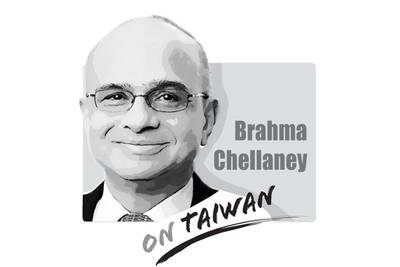Members of the US Senate Foreign Relations and Armed Services Committees have begun to forcefully point out the People’s Republic of China’s (PRC) decades-long misuse, misinterpretation and misleading analysis regarding UN Resolution 2758.
According to the view of PRC officialdom, beginning 50 years ago, on Oct. 25, 1971, the resolution clearly recognized that Taiwan is a part of China, and China is in charge of representing Taiwan before the UN, in accordance with the PRC’s “one China” principle.
In fact, Resolution 2758 has no such content. Indeed, the word Taiwan is not even mentioned therein.
Here in late October 2021, other members of the US House of Representatives have also made similar charges against PRC officials’ incorrect interpretation of this important resolution.
While US Congress members’ long-overdue attention to this matter is certainly praiseworthy, it is unfortunately true that the Chinese have a history of misuse, misinterpretation and misleading analysis regarding other important documents and events that go back even further than 50 years. The Japanese surrender ceremonies in Taiwan, held 75 years ago on Oct. 25, 1945, are one prominent example.
In the view of the PRC, along with many blue-camp supporters in Taiwan, an immediate transfer of Taiwan’s territorial sovereignty to China took place based on the Cairo Declaration of Dec. 1, 1943, the Potsdam Proclamation of July 26, 1945, and the ceremonies themselves.
Granted, during the pre-Napoleonic period, such territory was commonly considered to be “annexed” as soon as an overwhelming number of foreign military forces arrived on the scene. However, international law changed in the late 1700s to the early to mid-1800s.
In the 20th century, such an annexation interpretation directly contradicts the 1907 Hague Conventions and accompanying Hague Regulations. HR 42 specifically states that territory under the authority of foreign (i.e. hostile) military forces is considered to be under military occupation.
Scholars in laws of war confirm that “military occupation does not transfer sovereignty.”
Importantly, the validity of the Hague Conventions in dealing with laws of war was recognized by the Republic of China in May 1917.
Such evidence strongly suggests that there was no “Taiwan Retrocession Day.” Oct. 25, 1945, was merely the beginning of the military occupation of Taiwan.
Notably, in the Foreign Relations of the US series, the US Department of State has many entries confirming that there was no transfer of Taiwan’s territorial sovereignty to China in Oct. 1945.
An entry from January 1951 regarding Formosa states: “As one of the victor powers we have residual rights there until a Japanese peace treaty has been made. The Cairo declaration manifested our intention. It did not itself constitute a cession of territory.”
If this knowledge could be more widely disseminated in the global community, perhaps the question of whether Taiwan is truly a part of China could be resolved once and for all.
Tom Chang is secretary-general of the Taiwan Autonomy Foundation.

Donald Trump’s return to the White House has offered Taiwan a paradoxical mix of reassurance and risk. Trump’s visceral hostility toward China could reinforce deterrence in the Taiwan Strait. Yet his disdain for alliances and penchant for transactional bargaining threaten to erode what Taiwan needs most: a reliable US commitment. Taiwan’s security depends less on US power than on US reliability, but Trump is undermining the latter. Deterrence without credibility is a hollow shield. Trump’s China policy in his second term has oscillated wildly between confrontation and conciliation. One day, he threatens Beijing with “massive” tariffs and calls China America’s “greatest geopolitical
US President Donald Trump’s seemingly throwaway “Taiwan is Taiwan” statement has been appearing in headlines all over the media. Although it appears to have been made in passing, the comment nevertheless reveals something about Trump’s views and his understanding of Taiwan’s situation. In line with the Taiwan Relations Act, the US and Taiwan enjoy unofficial, but close economic, cultural and national defense ties. They lack official diplomatic relations, but maintain a partnership based on shared democratic values and strategic alignment. Excluding China, Taiwan maintains a level of diplomatic relations, official or otherwise, with many nations worldwide. It can be said that
Chinese Nationalist Party (KMT) Chairwoman Cheng Li-wun (鄭麗文) made the astonishing assertion during an interview with Germany’s Deutsche Welle, published on Friday last week, that Russian President Vladimir Putin is not a dictator. She also essentially absolved Putin of blame for initiating the war in Ukraine. Commentators have since listed the reasons that Cheng’s assertion was not only absurd, but bordered on dangerous. Her claim is certainly absurd to the extent that there is no need to discuss the substance of it: It would be far more useful to assess what drove her to make the point and stick so
The central bank has launched a redesign of the New Taiwan dollar banknotes, prompting questions from Chinese Nationalist Party (KMT) legislators — “Are we not promoting digital payments? Why spend NT$5 billion on a redesign?” Many assume that cash will disappear in the digital age, but they forget that it represents the ultimate trust in the system. Banknotes do not become obsolete, they do not crash, they cannot be frozen and they leave no record of transactions. They remain the cleanest means of exchange in a free society. In a fully digitized world, every purchase, donation and action leaves behind data.